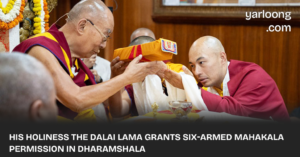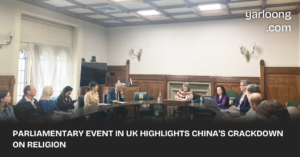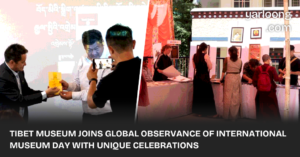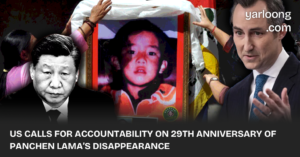
On Friday, Leh, Ladakh witnessed a significant event as the Indian Himalayan Council of Nalanda Buddhist Tradition convened a conference titled ‘Nalanda Buddhism in the 21st Century: Challenges and Responses.’
Attracting over 550 participants, including esteemed Rinpoches, Geshes, Khenpos, Monks, Nuns, and academic scholars, the gathering centered on the growing disconnect between Leh’s populace and the monastic community. Maling Gonbo, the General Secretary of the Council, emphasized, “The widening gap necessitates initiatives that unite Ladakh’s residents and the monastic entities. Our goal is to make the Nalanda Buddhist Tradition accessible to all, underscoring the pivotal role of monastics.”
ALSO READ: Dalai Lama Visits Imam Bargah Mosque in Ladakh, Advocates Inter-religious Harmony
Nalanda Buddhism celebrated for fostering cross-cultural interactions, has been instrumental in promoting cultural unity and stability in the Himalayan area. This legacy strengthens national cohesion and enhances the strategic integration of these regions. For the Ladakh community, the event was particularly enlightening, especially for the younger generation.
Tsering Dorjay, the Vice President of the Ladakh Buddhist Association, highlighted the local significance, stating, “The event in Ladakh offers a prime occasion for residents, particularly the youth, to delve deep into the Nalanda tradition.”
Emphasizing the core philosophy of Buddhism, Professor Stanzin Minjur from CIBS Leh shared, “Mahatma Buddha epitomized peace and always advocated for a balanced approach to life.”
The Himalayan belt, encompassing areas from Tawang and Sikkim to Uttarakhand and Ladakh, stands as a testament to the enduring Buddhist traditions. However, with evolving political, cultural, and economic landscapes, this rich Buddhist heritage faces notable transformations.






